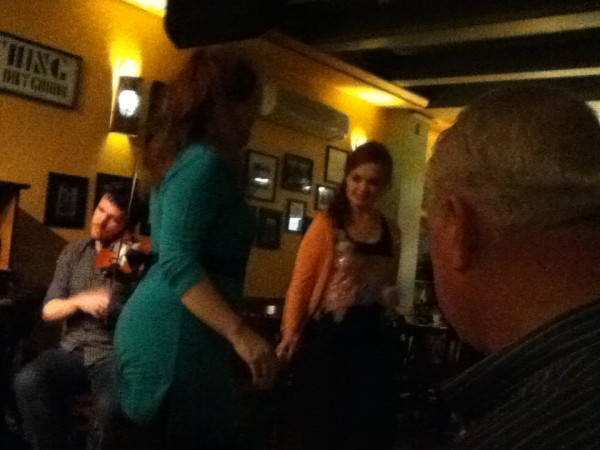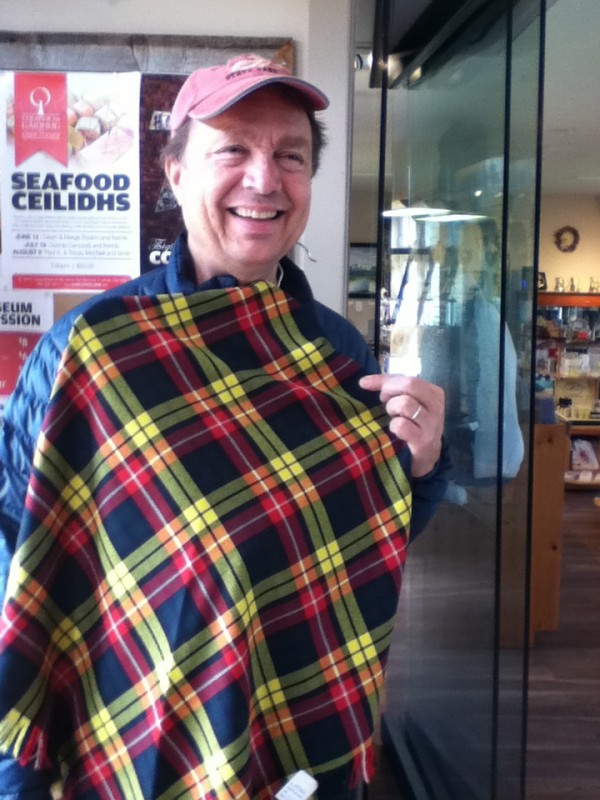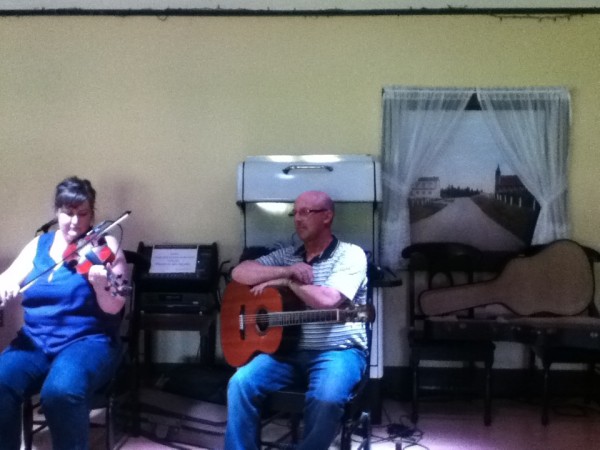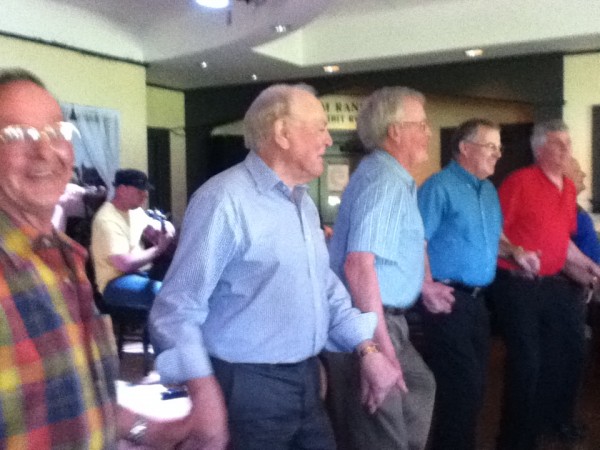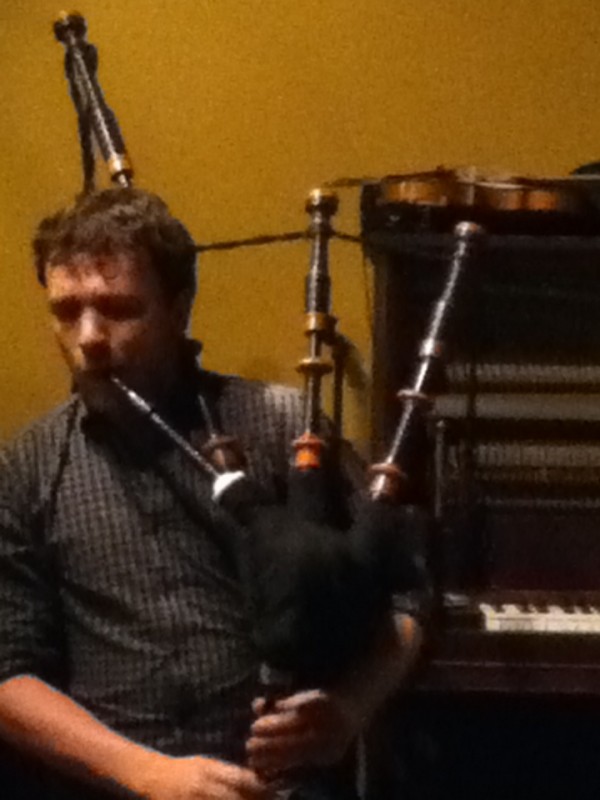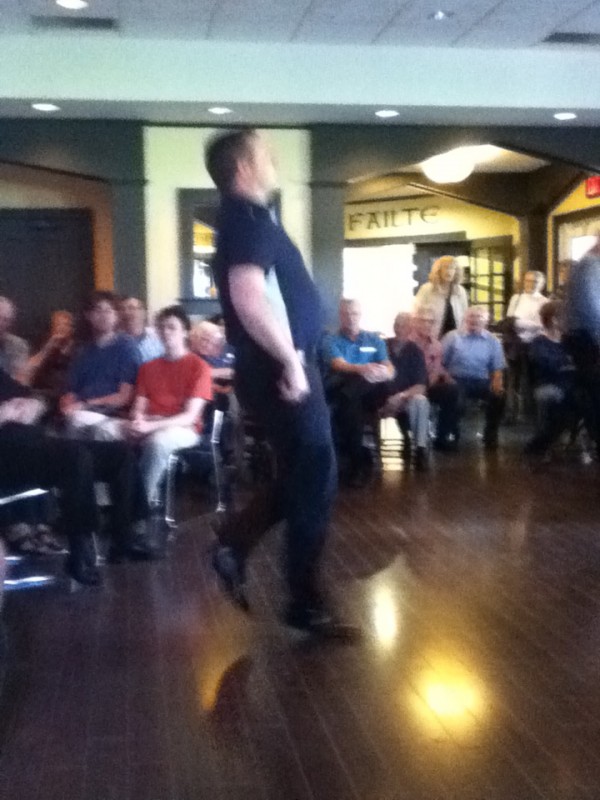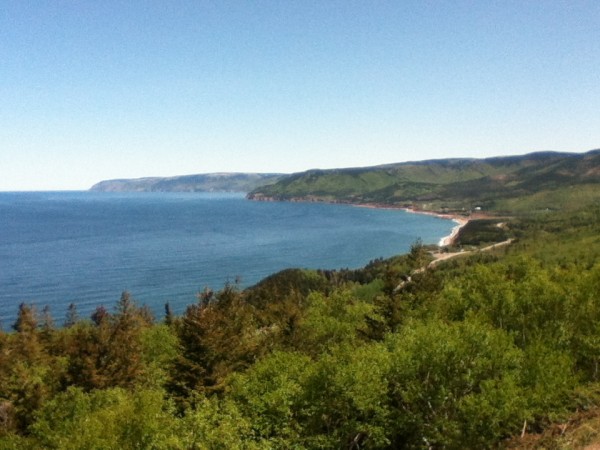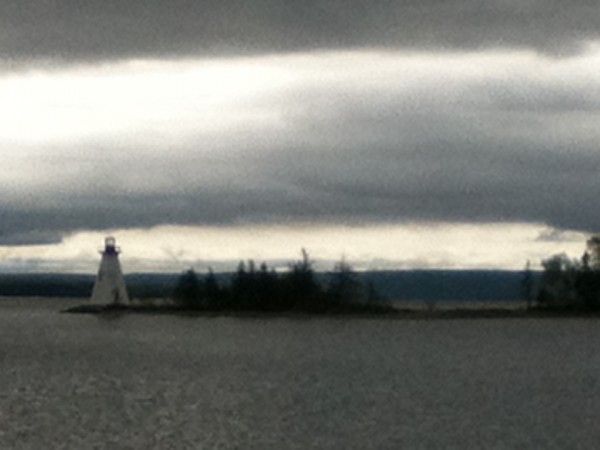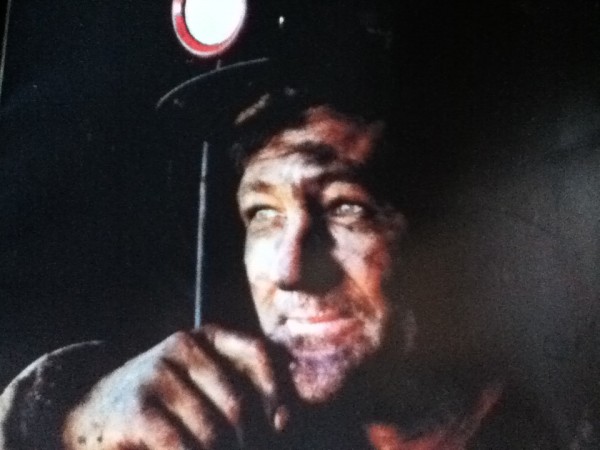We loved this humorous message on a billboard on the Island, partly because we appreciated that it wasn’t in Gaelic. The more common sentiment, “C’EAD MILE FAILTE: A HUNDRED THOUSAND WELCOMES” reflects the warmth and down to earth culture on Cape Breton Island. As Gaelic is not a latin-based language, we needed every assistance possible as we never pronounced the Gaelic correctly on the first try. We often shared tables with lifelong residents who helped us patiently with pronunciation. We especially enjoyed eating dinner with the proud parents of these two lasses below who spontaneously danced for the crowd.
We visited the Gaelic College in St. Ann’s in the Highlands to learn about music, dance, and language classes. Steven learned that the Richardsons are a Gaelic clan and can wear the Buchanan tartan. Jeez, wouldn’t you know his clan tartan was the most unattractive bright yellow plaid. Fortunately, he can also wear the Ogilbie blue and green tartan, featured above. I just wish he would don a kilt, so I can lift it up, and take a salacious peek!
The most important word we needed to know in Gaelic was “Ceilidh” (pronounced “KAY-lee”), meaning “Kitchen Party”. Based on the tradition of music jams in residents’ kitchens welcoming all instruments and participants, now there are events open to the public and held in churches, pubs, and community centers several times a week in winter, and several times a day in summer. We got to six of these during two weeks on Cape Breton Island, planning our travel route and schedule to capture the best Ceilidhs on the Island. Mabou (pronounced MAB-uh) kept drawing us back, especially to the Red Shoe, a pub/bistro/Gaelic music venue founded by the famous Rankin sisters. We even joined a work crew for several hours in Mabou scouring the local community building, enjoying the residents, and their kindness, and earning an invitation to their community dinner and concert in four weeks. Some say small towns are nosy and gossipy, but we also came to understand it also means butting in to help people because small communities take care of their own. We got to know one very old, tiny man impaired with alcohol at every venue we went to, who would approach the musicians, but accidentally kick over their beer. The residents responded by asking him to sit with them. Very kind. It turns out he attends EVERY music event, and is in over one hundred you.tube videos, and people on the other side of the Island, all know him by name.
Humorously, some stages add a stove and kitchen curtains to the stage to honor the roots of this tradition. Most venues make space for dancers to move together for jigs, reels and square dances. We loved seeing all ages on the dance floor, often individuals stepping up to solo perform just moving with the joyous Gaelic spirit!
The music is very moving even if you don’t dance, and likely you will be pulled onto the floor for at least one dance by the friendly locals. We also found out how LOUD a bagpipe is indoors, as part of a fiddle, guitar, and piano quartet!
Even the famous fiddler, Rodney MacDonald (Premier of the Province of Nova Scotia 2006-2009..like a State Governor in the U.S.) was airborne dancing (below) with the fastest footwork on the Island…sometimes while playing a mean fiddle; he is so welcoming, a great Ambassador for Cape Breton Island as Rodney is also CEO of the Gaelic College. Some people make you feel like such a slacker, as we also found him housepainting at his RV and Cottages property, The Ceilidh Cottages, when he allowed us to come there to do laundry in an emergency.
What emergency you may ask? Lety found a dead seal on the beach, managed to eat buckets of decayed tissue, and then returned to the RoadTrek to vomit in three separate places. Nothing smells as hideous as dead seal puke. Really. Three washes did not remove the stench from our blanket, towel and seat cover. We tried to leave Lety outside after the first hurl, but in 5 minutes, the black flies bit her leaving over 30 painful hematomas on her belly! Anywhere on the Island during May, away from a stiff wind, brings a nasty onslaught of black flies…but only in May we are told, because of the forested, fern, and moss filled Island after a long winter of rain and snow. Lush, but it kept us from biking the Cabot Trail through the Highlands as we couldn’t stand the idea of a fly attack on a long, slow bike ascent, if the wind stopped. Torture, I am sure as there would be no escape. Wimps? For sure, when it comes to biting bugs…
We are truly happy for the gusty, cool conditions, and the very kind residents who encourage us to sleep 20 feet from the water near their homes and businesses to avoid the worst of the bugs. Even the Mounties near Bras D’or Lake below, were so understanding; told us it was just a warning, but we might want to comply with Canadian law by making our rear license plate visible, and to get our expired California tags updated. Gulp! I somehow don’t think our California Highway Patrol would be so understanding to errant tourists.
Cape Breton Island is inviting in its warm welcome to small village life, talented Gaelic musicians, and endless highland and water views. There is no enticing big city, only boring and provincial Sydney, which offers Gaelic culture mostly on the days the cruise ships dock.
However near Sydney at Glace Bay, is a fabulous museum experience: The Ocean Deeps Colliery, a guided underground tour by former miners. Our guide, Abbie, was in the mines for 54 years, beginning at age 16 with his father and grandfather. The bituminous coal veins moves out from the shoreline 90 miles to Newfoundland, much of the first 6 miles interlaced with tunnels, up to 3500 feet under the ocean surface. The corporations took advantage of the miners, requiring them to buy their own equipment and blasting powder, and refusing to pay them for the 3 hour/day transport system to their “rooms” in the dark, their time building tunnels and blasting, only paying for each cart filled with coal. Then the corporation charged them for mud floor houses with one cold faucet, and their purchases at the company store. Few families had more than pennies leftover, even with several family members working 6 days a week. Every time the corporations lowered their payment for coal recovery, miners’ unions were formed, then crushed. Until the support of the United Mine Workers, USA intervened to stop physical assaults on miners and their family members, scab employees, and starvation caused by denying credit at the company store during strikes. However, the United Mineworkers at some point turned their backs on the Cape Breton miners, calling them Bolsheviks. When families were dying of starvation and freezing temperatures, Canada legislated the equivalent of a minimum wage. As fracking becomes an issue in the Atlantic Maritimes in Canada, we hope that these small communities are more effective at organizing to protect themselves from this jeopardy than were their ancestors on Cape Breton Island.


